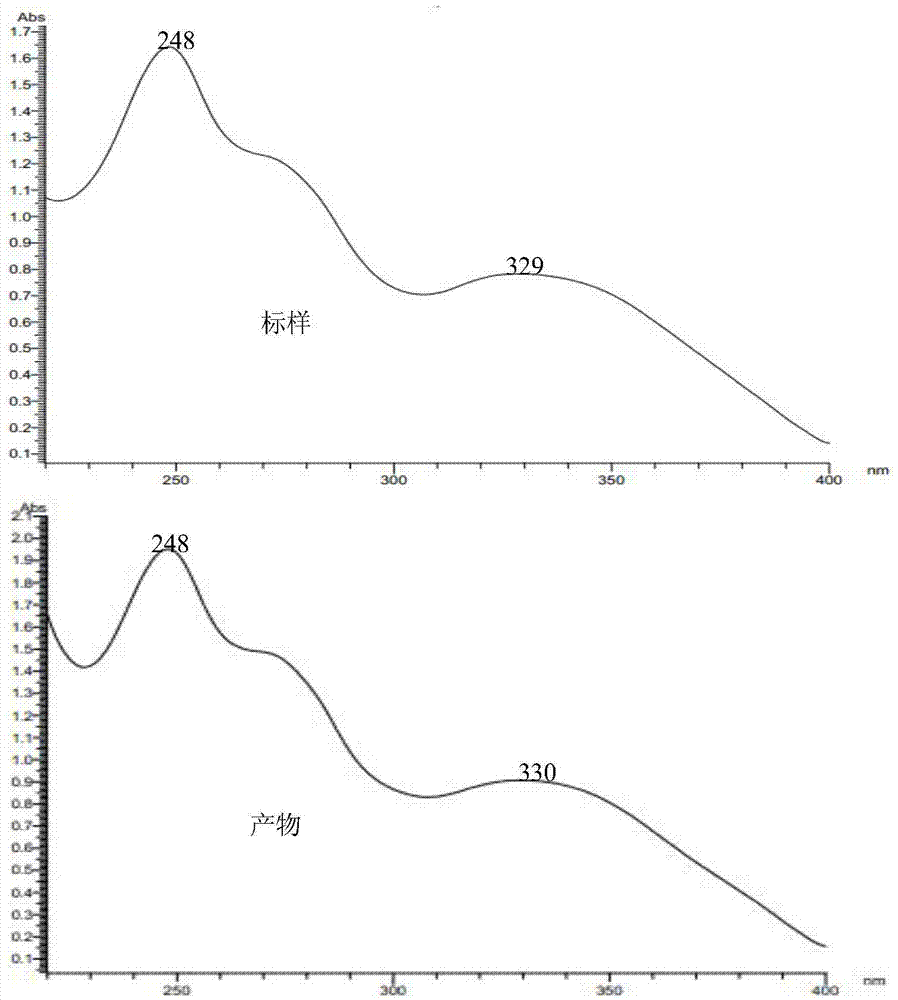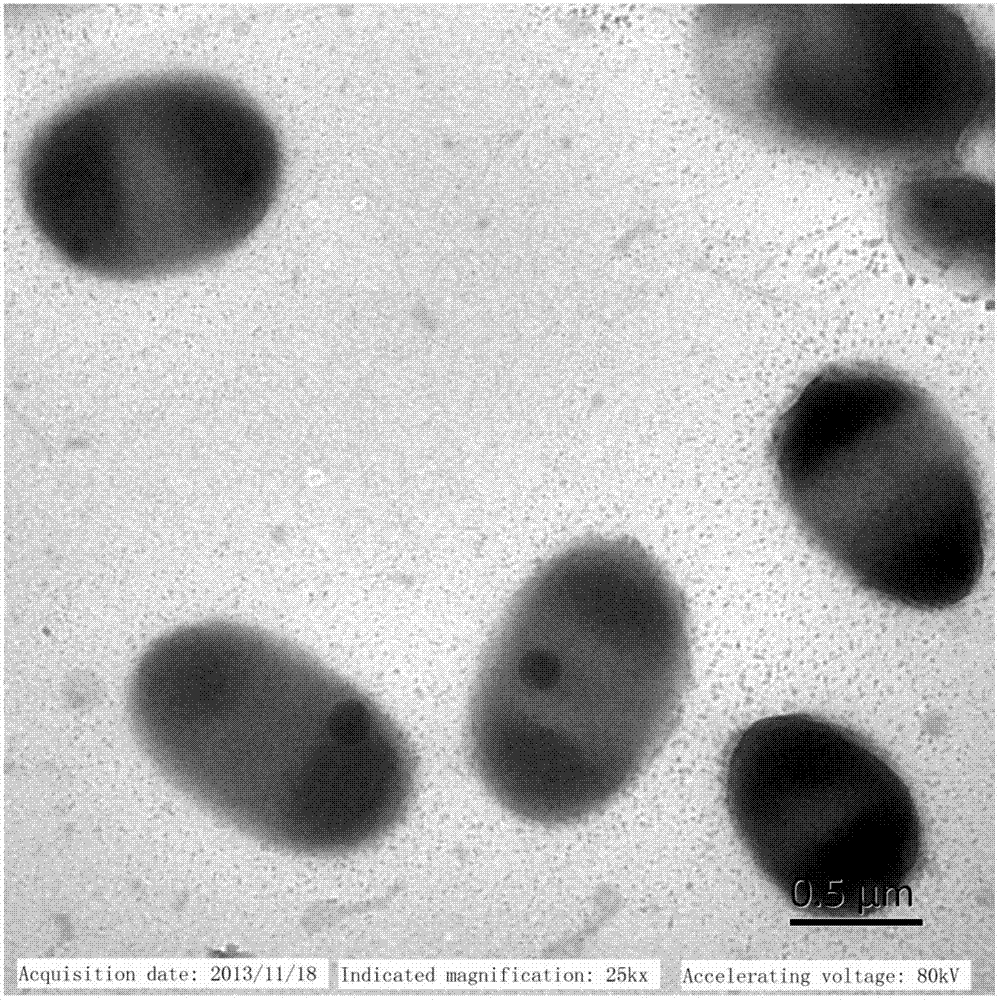Methylotrophic bacteria and method for producing pyrroloquinoline quinine (PQQ) by fermentation thereof
A technology of methylotrophic bacteria and fermentation medium, applied in the field of methylotrophic bacteria and its fermentation to produce pyrroloquinoline quinone
- Summary
- Abstract
- Description
- Claims
- Application Information
AI Technical Summary
Problems solved by technology
Method used
Image
Examples
Embodiment 1P
[0030] The screening of embodiment 1PQQ producing bacteria
[0031] Slant medium and plate screening medium: K medium, see "Bergey's Handbook of Systematic Bacteriology" (Second Edition, 2004, Volume Two, PartC, P421.). K medium: ammonium sulfate 2.0g / L, potassium dihydrogen phosphate 2.0g / L, sodium chloride 0.5g / L, magnesium sulfate heptahydrate 0.125g / L, ferrous sulfate heptahydrate 0.002g / L, methanol 8g / L L, pH7.
[0032] Fermentation medium used in screening: ammonium sulfate 3.0g / L, potassium dihydrogen phosphate 1.4g / L, disodium hydrogen phosphate 3.0g / L, magnesium sulfate 0.2g / L, iron citrate 30mg / L, calcium chloride 30mg / L, manganese chloride 5.0mg / L, zinc sulfate 5.0mg / L, copper sulfate 0.5mg / L, methanol 6g / L; pH7.0.
[0033] A total of more than 80 soil or water samples were collected from Wuxi and its surrounding areas, and made into appropriate concentration dilutions, which were directly spread on the K medium screening plate, cultured at 30°C for 3-5 days, and...
Embodiment 2
[0038] Identification of the strain Methylopilasp.YHT-1 of embodiment 2
[0039] The morphological characteristics, physiological and biochemical characteristics (Table 2) of YHT-1 were identified according to "Bergey's Handbook of Systematic Bacteriology" (Second Edition, 2004) and the original literature of the strains of this genus. Streak culture on the K medium plate for 2 days, the colony is milky white, round, translucent, smooth, viscous, raised in the middle, neat at the edge, and 1-2mm in diameter. Electron microscope photographs show that ( image 3 ), the bacterium is rod-shaped or (ellipsoid) spherical, with a size of 0.5-0.7×0.9-1.4μm; this strain does not produce spores, has capsules, no flagella, and does not move. Facultative anaerobic, Gram-negative, suitable growth temperature range 25-37 ℃; suitable growth pH range 6.5-8.0; can micro-grow in liquid medium without adding nitrogen source. The chromosomal DNA of YHT-1 was extracted according to the bacterial...
Embodiment 3
[0048] Purification and determination of embodiment 3 product:
[0049] First wash the column with 20mM sodium citrate buffer (pH5.5), then pass the YHT-1 fermentation supernatant filtered through a microporous membrane through a 20mLDEAE anion exchange column at a flow rate of 1mL / min, and then wash it with 2-5 times Column volume of sodium citrate buffer (pH5.5) to wash and equilibrate, and then carry out 0-100% gradient elution with sodium citrate buffer (pH5.5) containing 1M NaCl, the elution volume is 10 to 20 times the column volume , and finally the red PQQ product after preliminary purification was obtained.
[0050] Analysis of the purified product:
[0051] HPLC analysis: Dissolve the PQQ standard sample (purchased from Wuhan Nuohui Pharmaceutical Chemical Co., Ltd., purity ≧ 98%) with the same concentration of sodium citrate buffer as that of the purified product, make the solvents of the two consistent, and perform HPLC analysis on the purified product ( figure 1...
PUM
 Login to View More
Login to View More Abstract
Description
Claims
Application Information
 Login to View More
Login to View More - R&D
- Intellectual Property
- Life Sciences
- Materials
- Tech Scout
- Unparalleled Data Quality
- Higher Quality Content
- 60% Fewer Hallucinations
Browse by: Latest US Patents, China's latest patents, Technical Efficacy Thesaurus, Application Domain, Technology Topic, Popular Technical Reports.
© 2025 PatSnap. All rights reserved.Legal|Privacy policy|Modern Slavery Act Transparency Statement|Sitemap|About US| Contact US: help@patsnap.com



